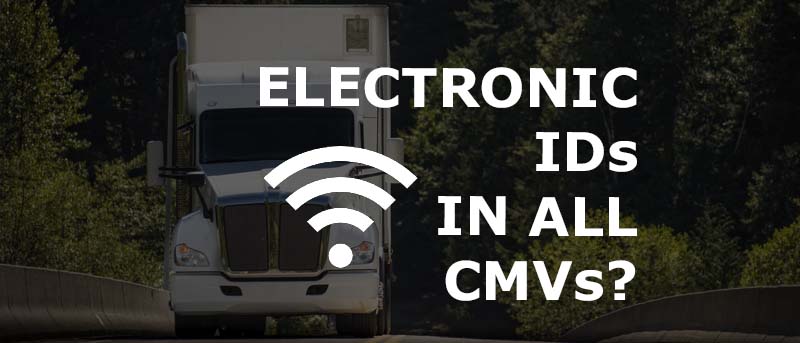How Fleets Can Easily Remove Crash Preventability Off CSA Scores
CNS can help with our Roadside & Incident Report Management service where a team of DOT Compliance Specialists will assess the Department of Transportation safety records
We are a team of DOT Compliance and Licensing Professionals helping trucking and transportation companies remain safe, compliant, and profitable.
CNS or Compliance Navigation Specialists is DOT Compliance company that assists trucking and transportation companies remain DOT Compliant. We are part of a network of companies, CNS Companies, specializing in services related to the transportation, manufacturing, construction, service, education and medical industries.

A full-scale DOT Compliance Program managing a long haul carrier’s safety, compliance, licensing and more.
Learn more >>>
A DOT Compliance Program that keeps motor carriers compliant with the 6 Basic DOT Regulations required of all carriers.
Learn more >>>
Our Short-Haul/Construction Program is a full-scale program designed for private carriers that do not haul for-hire.
Learn more >>>
Our most comprehensive DOT Compliance Program, operating as your company’s off-site Safety Director or assisting your current safety personnel.
Learn more >>>
Our Non-CDL Program is a full-scale program managing safety, compliance, licensing and more for moving companies, couriers, landscapers, or any company subject to DOT regulations and does not employ CDL drivers.
Learn more >>>
Our DOT Audit Services cover a number of different types of DOT Audits that new and existing carriers will be subject to.
Our DOT Driver Services help trucking companies and carriers to stay compliant as they grow and hire more drivers.
Our DOT Vehicle Services focus on ensuring your vehicles are compliant with DOT Regulations, which is just as important as your drivers.
Our DOT Services for Special Carriers focus on companies outside of the typical motor carrier, like HAZMAT, Passenger and Bus Carriers.
CNS is part of a group of companies that offer other necessary services for the trucking and transportation industry, such as Commercial Trucking Insurance, CDL Training, Online Training Course, and even Healthcare.
Our DOT Licensing Services will cover you whether you are an existing company or just starting a trucking company. Our DOT Licensing Specialists can help you get up and running and in days with your DOT number, MC Authority, EIN, UCR, IFTA, 2290 HVUT, Fuel Taxes and can even set you up to get your Commercial Driver's License (CDL) with CNS Driver Training Center.
Our DOT Licensing Specialists will help you with every aspect of starting a trucking company. All you need to do is choose a name for your trucking company.
You will need to ensure your DOT Number, MC Authority, Vehicle Registration, etc. is all set up properly when you start your trucking business.
Our Licensing Specialists can help with all aspects of filing and renewing licenses, fuel taxes, etc.
CNS is part of a group of companies that offer other necessary services for the trucking and transportation industry, such as Commercial Trucking Insurance, CDL Training, Online Training Course, and even Healthcare.
CNS can help with our Roadside & Incident Report Management service where a team of DOT Compliance Specialists will assess the Department of Transportation safety records
CNS or Compliance Navigation Specialists is DOT Compliance company that assists trucking and transportation companies remain DOT Compliant. We are part of a network of companies, CNS Companies, specializing in services related to the transportation, manufacturing, construction, service, education and medical industries.
CNS Companies is a network of companies specializing in services related to the transportation, manufacturing, construction, service, education and medical industries. Our DOT Compliance division is handled by Compliance Navigation Specialists, CNS Insurance handles Commercial Truck Insurance, CDL training is managed by the CNS Driver Training Center and healthcare is managed by CNS Occupational Medicine.
We are a team of DOT Compliance and Licensing Professionals helping trucking and transportation companies remain safe, compliant, and profitable.
CNS or Compliance Navigation Specialists is DOT Compliance company that assists trucking and transportation companies remain DOT Compliant. We are part of a network of companies, CNS Companies, specializing in services related to the transportation, manufacturing, construction, service, education and medical industries.

A full-scale DOT Compliance Program managing a long haul carrier’s safety, compliance, licensing and more.
Learn more >>>
A DOT Compliance Program that keeps motor carriers compliant with the 6 Basic DOT Regulations required of all carriers.
Learn more >>>
Our Short-Haul/Construction Program is a full-scale program designed for private carriers that do not haul for-hire.
Learn more >>>
Our most comprehensive DOT Compliance Program, operating as your company’s off-site Safety Director or assisting your current safety personnel.
Learn more >>>
Our Non-CDL Program is a full-scale program managing safety, compliance, licensing and more for moving companies, couriers, landscapers, or any company subject to DOT regulations and does not employ CDL drivers.
Learn more >>>
Our DOT Audit Services cover a number of different types of DOT Audits that new and existing carriers will be subject to.
Our DOT Driver Services help trucking companies and carriers to stay compliant as they grow and hire more drivers.
Our DOT Vehicle Services focus on ensuring your vehicles are compliant with DOT Regulations, which is just as important as your drivers.
Our DOT Services for Special Carriers focus on companies outside of the typical motor carrier, like HAZMAT, Passenger and Bus Carriers.
CNS is part of a group of companies that offer other necessary services for the trucking and transportation industry, such as Commercial Trucking Insurance, CDL Training, Online Training Course, and even Healthcare.
Our DOT Licensing Services will cover you whether you are an existing company or just starting a trucking company. Our DOT Licensing Specialists can help you get up and running and in days with your DOT number, MC Authority, EIN, UCR, IFTA, 2290 HVUT, Fuel Taxes and can even set you up to get your Commercial Driver's License (CDL) with CNS Driver Training Center.
Our DOT Licensing Specialists will help you with every aspect of starting a trucking company. All you need to do is choose a name for your trucking company.
You will need to ensure your DOT Number, MC Authority, Vehicle Registration, etc. is all set up properly when you start your trucking business.
Our Licensing Specialists can help with all aspects of filing and renewing licenses, fuel taxes, etc.
CNS is part of a group of companies that offer other necessary services for the trucking and transportation industry, such as Commercial Trucking Insurance, CDL Training, Online Training Course, and even Healthcare.
CNS can help with our Roadside & Incident Report Management service where a team of DOT Compliance Specialists will assess the Department of Transportation safety records
CNS or Compliance Navigation Specialists is DOT Compliance company that assists trucking and transportation companies remain DOT Compliant. We are part of a network of companies, CNS Companies, specializing in services related to the transportation, manufacturing, construction, service, education and medical industries.
CNS Companies is a network of companies specializing in services related to the transportation, manufacturing, construction, service, education and medical industries. Our DOT Compliance division is handled by Compliance Navigation Specialists, CNS Insurance handles Commercial Truck Insurance, CDL training is managed by the CNS Driver Training Center and healthcare is managed by CNS Occupational Medicine.

FMCSA is considering a rulemaking to require all CMVs operating in interstate commerce to have an electronic ID system.
FMCSA currently does not require CMVs to be equipped with a system capable of transmitting a unique electronic ID (referred to as electronic ID in remainder of the document) for operation.
However, some vehicles are equipped with internet connectivity through wireless networks. Trucking companies offer wireless connections through cellular coverage areas by connecting existing wireless devices to a commercial mobile radio service. Using these services, operators of vehicles can send and receive electronic messages, order parts, and find loads.
Additionally, FMCSA provides grant funding to States for technology projects that electronically identify a CMV, verify its size, weight, and credentials information, and review its carrier’s past safety performance while the vehicle is in motion and then communicate safely to the driver to either pull in or bypass the roadside inspection station.
Per Motor Carrier Safety Assistance Program (MCSAP) policy, vehicles are allowed to bypass inspection facilities (although such vehicles are still subject to random inspection) if they are:
Electronic screening (e-screening) projects are designed to identify high-risk motor carriers/CMVs for roadside inspection, and to reduce operating costs for safe and legal motor carriers.
Twelve years ago, CVSA submitted a petition for rulemaking requesting that FMCSA amend § 390.21 to require that every commercial motor vehicle, as defined in § 390.5, used in interstate commerce be equipped with an electronic device capable of communicating a unique ID number when queried by a law enforcement roadside system.
CVSA contended that implementation of a mandate requiring an electronic ID would “facilitate efficiency and efficacy in the roadside inspection program by more fully enabling roadside enforcement agencies to target their efforts at high-risk operators, while at the same time, providing an incentive for safe and legal operations.”
FMCSA denied the petition for rulemaking on May 24, 2013 noting that, before undertaking rulemaking, it would be prudent to:
And now the winds are changing.
There are eight levels of inspections ranging from the Level I Inspection, which evaluates both the driver and vehicle, to inspection levels with a more specific area of focus, such as Level VI for radioactive materials and Level VIII for electronic inspections, which is currently not being used.
FMCSA is undertaking an operational test of Level VIII Electronic Inspections to enhance its current process for monitoring and enforcing motor carrier and driver safety compliance. This test will provide insight into several of the issues being considered in this rulemaking.
A Level 8 inspection is simply a “credential check” where, for example, carriers could be caught for not having their Unified Carrier Registration (UCR) current, though will most likely not affect safety scores as it will not be checking for flat tires or other safety issues covered in deeper inspections.
[Related: When To Expect CVSA’s Level 8 Electronic Credentials Inspection]
Electronic screening provides value to a responsible carrier because of the time and money saved not having to stop at weigh stations. Electronic screening provides benefits to participating agencies too, as they can focus resources on high-risk carriers.
This inspection, as defined by the CVSA, would include:
But we are far from this inspection hitting our roadways.
According to CVSA, the next step in the electronic inspection implementation process for member jurisdictions will be the development of the information technology (IT) infrastructure to capture the information required for a Level VIII Electronic Inspection.
The challenge is that each vehicle will have to have the technology to send the information, and then the state will have to have a way to receive it in a secure way.
Well, now it is being discussed.
FMCSA is soliciting further information regarding various aspects of electronic identification including the best possible technical and operational concepts along with associated costs, benefits, security, vulnerability, privacy and other relevant deployment and operational implications.
General
Functionality
Populations Affected
Costs/Benefits
Other
Comments to this rulemaking can be submitted here.
At CNS, our DOT Compliance Programs focus on Proactive Safety Management (PSM), a mindset that will ensure your fleet’s safety and compliance is always in order and ahead of the FMCSA.
We offer several different program levels depending on the size of your organization, however our PSM Motor Carrier Program is more common when considering affordability and the comprehensive DOT compliance assistance.
Our PSM Motor Carrier Program includes:

If your lights aren’t on at night, but they work, that’s no longer an OOS violation, though it’s still a violation of state laws to

Article written by Tim Miller, CNS How stressful is your job? Do you think about it while off the clock? Does it make you anxious

While checking for the presence of alcohol or controlled substances during an inspection, inspectors will: Observe the driver for signs of alcohol or controlled substance;

Many companies, including motor carriers, are now required to report information to FinCEN about the individuals who own or control them, or face fines. Here’s
Our DOT Compliance Programs ensure it is your top priority and keeps your business running.
Receive the latest transportation and trucking industry information about FMCSA and DOT Audits, Regulations, etc.

If your lights aren’t on at night, but they work, that’s no longer an OOS violation, though it’s still a violation of state laws to

Article written by Tim Miller, CNS How stressful is your job? Do you think about it while off the clock? Does it make you anxious

While checking for the presence of alcohol or controlled substances during an inspection, inspectors will: Observe the driver for signs of alcohol or controlled substance;
Join our monthly newsletter and stay up-to-date on trucking industry news and receive important compliance and licensing tips.
Join our monthly newsletter and stay up-to-date on trucking industry news and receive important compliance and licensing tips.